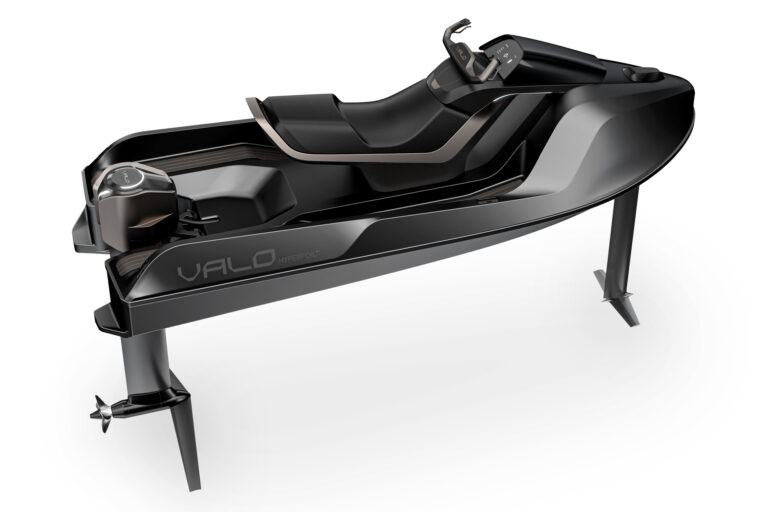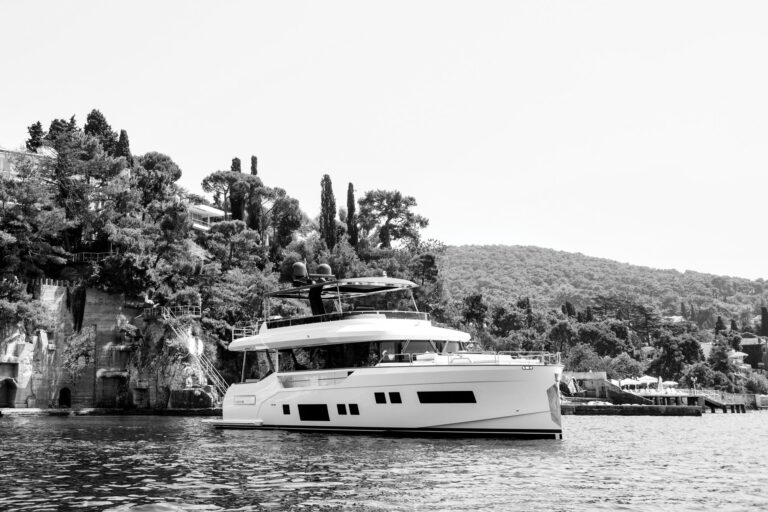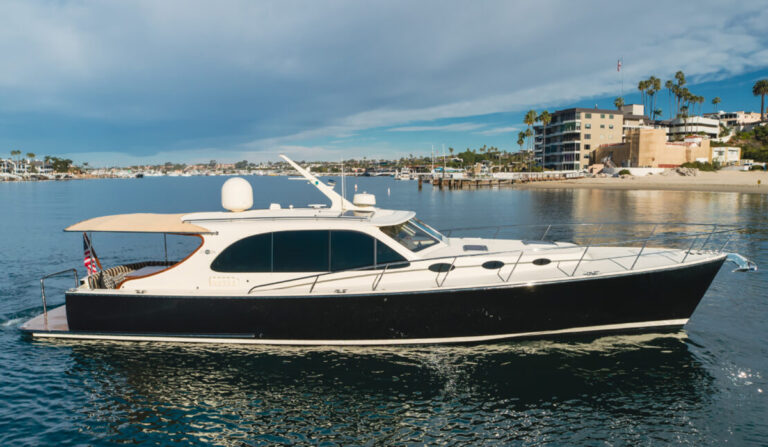Three decades ago, we were bringing a chartered trawler into an unfamiliar island harbor and, to make matters worse, dealing with big seas and a hatful of wind from a hurricane that had just grazed our area.
Steering from the bridge, I had the chart spread out in front of me. But in the growing dusk I couldn’t spot the two lights that marked the difference between a safe harbor and rocky destruction. I was sure-well, pretty sure-that my dead reckoning was right. Wind and spray made using the binoculars difficult, but no welcoming lights appeared.
I grabbed a cruising guide and tried to compare the tiny black and white photo of the shoreline with what I was seeing ahead: a wild surmise at best.
Just when I was ready to turn into deep water and, if necessary, wait offshore until dawn to try again, I saw surf breaking on one of the jetties. Then, miracle of miracles, the other jetty came into sight and we slid down their narrow path into mercifully smooth water.
After tying up, we headed straight for the waterfront pub for a needed bracer. As we entered, one of the locals at the bar turned to us and said, “I owe you drinks because I just lost a bet that you’d hit the jetty.”
It seems that the locals had been watching our approach and had a little bet going on whether we were going to make it or not. Why? Well, apparently the island didn’t turn on the navigation lights until the boating season started a month later. None of the nav lights were operating!
When it comes to cruising in unfamiliar waters, even veteran boaters get sweaty palms and make beginner mistakes. I could go on with how I’ve become an expert on ungrounding after I’ve tried to cruise where birds were standing, or how often I’ve gotten that stomach-knotting worry as I studied a chart that didn’t even faintly resemble the view through the windshield. And if I had a dollar for every buoy that wasn’t where I thought it should be, well, I wouldn’t be writing this column.
Everybody makes mistakes while navigating in unfamiliar waters. That’s why, instead of regaling you with mine, I’m passing along 10 tips that were learned the hard way.
1. Always Pre-plot Your Course
This is really a double tip, because it also means that you have to buy the right charts before you can pre-plot your course. You’d be surprised at how many skippers set off on a cruise into unknown waters without the proper charts. Dumb and dumber. Instead, get a chart that shows an overview of the entire area as well as detailed charts of the harbors along the way.
Spread the charts out at home, and plot your route ahead of time. You should pencil in the various courses you’ll be steering and write the compass headings on each course. Then, when you’re on the water, you’ll be ready.
2. Highlight Problem Areas
There are going to be areas of concern as you plot your course, such as shallow water, rocks or reefs, or other obstructions and dangers. Obviously, you’ll want to plot your course to pass safely around those areas, but it’s also a good idea to use Post-it notes as a reminder to be extra observant and cautious at those danger points.
3. Buy A Cruising Guide
There aren’t many waterways in the U.S. (or even the world) that don’t have a detailed cruising guide. This is worthwhile reading, because it can provide insider information on everything from currents to the best place to stop for hamburgers. A cruising guide, even if it has charts, should never be a replacement for your regular charts because it’s likely to be anywhere from one to several years old. Instead, think of a cruising guide as a way to fill in the information not found on charts.
4. Call Ahead For Info
It’s surprising how much information you can get simply by letting your fingers do the walking, as the telephone ads claim. Pick up the phone and call the harbormaster at your destination. Be honest, say you’ve never visited that area, and ask about what you should know ahead of time. It’s always better to ask.
You may find out, for example, that you need to reserve a slip or mooring rather than finding them unavailable when you arrive. You might get an invitation to radio ahead to check on weather or sea conditions in that area, and you could get a tip on the best pizza nearby. You might even get a warning that the navigation lights are turned off.
5. Be Prepared
From your chart and from the cruising guide, you’ll be able to make plans to handle conditions at your destination. If, for example, you find that the harbor bottom is grass and weed, you should plan to carry an anchor suitable for those conditions. If your destination has a larger tidal range than your home area, make sure your docklines are long enough to handle the difference and carry some extra fenders as well.
6. Follow The Locals
If you aren’t sure about the channel into an unfamiliar harbor, look for a local fishing boat. If you can, raise them on your VHF radio, explain your situation, and ask if they mind you following them through the channel. Make sure they know how much draft your boat has, or they may lead you across a shallow area that they can clear but you can’t.
In some harbors, particularly those that have shoals near the entrance with breaking surf, there’s no shame in calling the harbor patrol or Coast Guard to ask for advice. In many cases, they’ll send a boat out to lead you in if the conditions are dangerous.
7. Arrive Before Dark
As I discovered with that island harbor, you’ll have enough problems sorting out unfamiliar waters without complicating the situation with darkness. Your home waters can be a maze of lights at night, and it’s even more difficult when you don’t know the area.
When planning your cruise, figure out how long you think it will take to reach each destination, and then back up to find your departure time that day. Try to arrive at least a couple of hours before sunset so you have a safety margin if you are slowed by wind or weather. You may find yourself leaving your home waters before sunrise to reach your destination, but it’s much more preferable to leave familiar waters in the dark than arrive in an unknown area in the dark of night.
8. Know The Buoy System
If you’re entering another country or crossing from the ocean to inland waters, be prepared that the buoyage system for that area may be different. Europe, for example, reverses red and green on their waterways, which can lead to problems if you’re not prepared.
Even in the U.S., you’ll find separate buoy systems on the major inland rivers (such as the Mississippi), on the Intracoastal Waterway, and on waters lying within the boundary of a state, which use the Uniform State Waterway Marking System where buoys indicate the compass direction to an obstruction.
9. Program Your Electronics
Since electronic navigation equipment has become such an accepted part of our everyday boating life, be sure you include it in your plans for cruising.
Enter waypoints that you’ve marked on your chart into your GPS receiver. With these waypoints programmed in advance, you’ll have a useful tool not just for finding your present position, but for seeing how far you have to go, the course you need to steer, and a sense of how fast you’re covering the distance.
If your GPS has built-in charts, make sure they cover the area you’ll be entering. If they don’t, you’ll need to either buy an additional navigation chip for that area, or download additional chart information from a new or updated CD-ROM.
Don’t rely completely on a GPS or any electronic navigation tools, however. Electrical systems can fail, leaving you without critical information just when you need it most.
10. Ask Friends
Sometimes “the grapevine” is your best source of information, and you can often get useful advice and tips from friends who are familiar with your planned destination. Don’t be shy about asking-it’s the mark of a good seaman to plan ahead.
When it comes to unfamiliar waters, always err on the side of caution. If you aren’t sure of anything-your location, the depth of the water, the right course-stop your boat until you’re sure how to proceed.
Part of the excitement of boating is the sense of adventure, and visiting new places is a major part of that. The best part about taking these few simple precautions, especially in those unfamiliar waters, is that you’ll enjoy it even more. And it will be easier to find your way next time.









